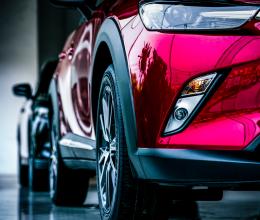EBITDA is typically a good cash-generative indicator for businesses as it is based on their ability to trade and turn that trade into profit, which then turns into cash. EBITDA offers a great way of measuring this and has formed the basis of our rankings.
Through our research, we considered hundreds of car dealers’ 2022 accounts to produce a league table of the most profitable. We reviewed financial statement after financial statement with a keen eye out for any industry trends that cropped up.
The experience was fascinating; seldom do we have the opportunity to take a step back and review these accounts in such detail. It allowed us to take a deep dive in and reflect on our findings. Here are just some of our findings:
The big are getting bigger
If we consider the 10 businesses who generated the largest EBITDA performances over the last twelve months, it gives us a startling insight into the automotive industry. Notably:
- The top 100 dealers deliver sales of £73.7bn and £2.8bn in EBITDA (a 3.8% return on sales)
- Combined, the top 10 deliver sales of £32.3bn and £1.5bn of EBITDA (4.7% on sales). That is nearly 44% and exactly 54% of these respective indexes in total.
It goes without saying that the automotive franchised retail business is asset intensive and so the ability for some of these larger, more profitable companies to reinvest into facilities and training must be an advantage for not only themselves, but their teams working as part of the business.
Is there a sweet spot to aim for? Potentially, yes; but this depends on the directors/shareholders appetite for risk and, to an extent, the strength and longevity of their brand relationships. Something to consider here is that there are, as expected, some very large and successful dealer groups who made it into our top 100 table: however, these companies are also bearing the brunt of the turnaround in fortunes, as apparent in the results published in the public domain.
The top automotive retailers possess similar characteristics that contribute to their overall success. They are nearly all large, multi-franchise dealers with an impressive range of vehicle choice available, as well as strong consumer brand awareness and trust.
Auto dealer or property investor?
Another key takeaway from our research is the huge impact a property transaction can have on the overall performance of a business.
We have seen some exceptional gains from disposals either for alternative use or as part of a sale and lease back. Similarly, there are several dealer groups with prominent positions in our league table with a remarkable property portfolio. An example of this is Car Giant, whose balance sheet contains investment property of a staggering £348m (excluding trading sites, which are shown separately). This goes on to generate the group £20m in rental income as disclosed within their 2022 statements, in addition to the gain on revaluation of £18.6m in the year.
It could be suggested that it appears that automotive retail businesses are often simply ‘occupying’ the property until the opportunity to cash in on the freehold investment occurs.
The devil is in the detail
Agency has now been introduced to a handful of brands in the UK, including Mercedes-Benz, Volvo and certain Volkswagen Group EV derivatives. Certainly, where traditional measures of Turnover or Return on Sales as a percentage are measured, the transactional ‘skew’ of agency will have a significant impact on the comparability of performance between dealer groups.
For example, a £50,000 (excluding VAT) vehicle would have sold attracting a 6% gross profit margin and will now be potentially replaced with an agency handling fee of simply £3,000. The Agency ‘handling’ fee will typically be presented as a line of income with minimal cost of sale, a very different transaction to a £50,000 sale with a cost of sale of £47,000. Or is it? Would the comparison of a Mercedes-Benz dealership and a BMW one even be possible from the published financial statements in the future?
2024 and beyond
The transition from 2023 into 2024 has seen new vehicle supply quickly switch from a pull to a push sales model; discounts have reappeared on a few brands, and finance subsidies are also starting to be seen in the retail arena, potentially in a bid to convince customers that the cost to change from their current car is affordable.
With the increased burden of interest costs (both from financing and stock funding), it is likely that the reported profits will not be at the level seen in 2022 or 2023.
Will the bigger groups get bigger? Quite possibly, and there is certainly a significant amount of M&A activity. But, on the whole, initial indicators for 2024 suggest that it is more the dealers who are high rankers in the top 100 index that are acquisitive and looking to grow, rather than the biggest getting bigger.
What we are seeing more of is the opportunity for dealers to multi-brand at existing points of representation, which we expect will allow a greater level of resilience to the increases in costs and interest and potential decline in vehicle sales profitability.
The trading terms of agency continue to evolve, although many brands seem ever more reluctant to commit to the change, whether this has any bearing on the sudden changes in the fortune of new car supply is obviously to be seen.
Want to know more?
Download our 2024 Automotive Outlook and turn to page 09 to read more about our findings, including more about how we used EBITDA to measure success, the EBITDA norm and YoY market trends.
You can view the full Top 100 list on Car Dealer's website.




